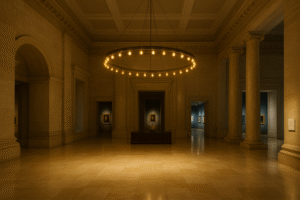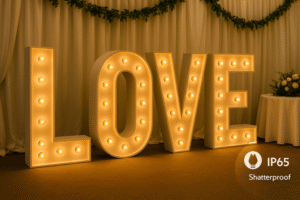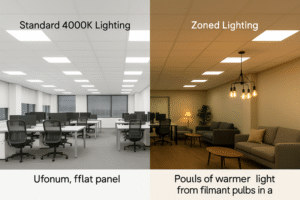Your retail space feels flat and unwelcoming. Products look dull under harsh lighting, and customers seem to rush out. You suspect your store's atmosphere is hurting sales.
Yes, strategic LED lighting can significantly influence consumer behavior. By creating an inviting atmosphere, enhancing product appearance, and guiding customer flow, the right lighting directly encourages longer visits and increases the likelihood of a purchase.
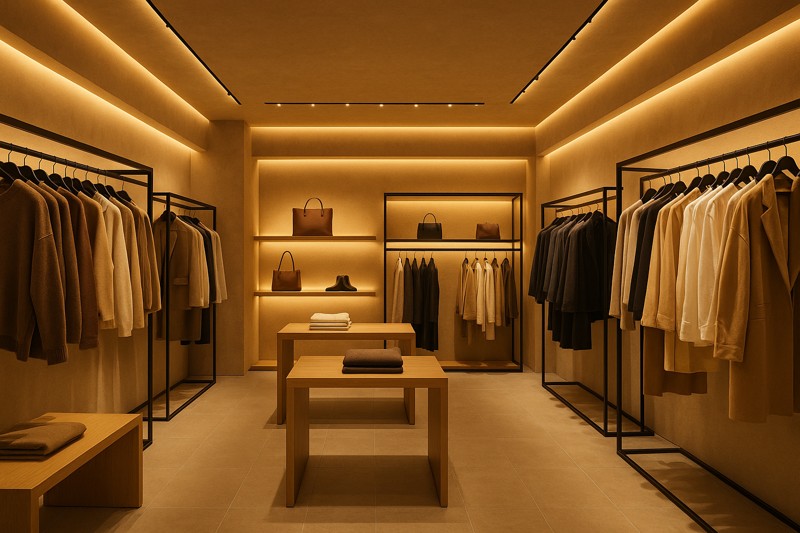
As a marketing manager at hongyu bulb, I often talk to retail owners. One of my clients, Jacky, who runs a chain of premium boutiques, was struggling with a new store location. The sales just weren't matching his other stores. When I visited, I saw the problem immediately: the lighting was cold and uniform. It felt more like an office than a luxury boutique. We worked together to replace his generic panels with a layered system of our decorative, dimmable LED bulbs. The change was transformative. The warm, inviting glow created a completely different shopping experience. Let’s explore how this works.
Does the Color of Light Change How Products Look?
Do the colors of your products appear faded under your store's lights? Customers won't buy what they can't see properly, and poor color accuracy can make high-quality goods look cheap.
Absolutely. The quality of light dramatically affects color perception. LEDs with a high Color Rendering Index (CRI), like those with a CRI over 80, ensure colors appear vibrant and true to life, making products more attractive to customers.
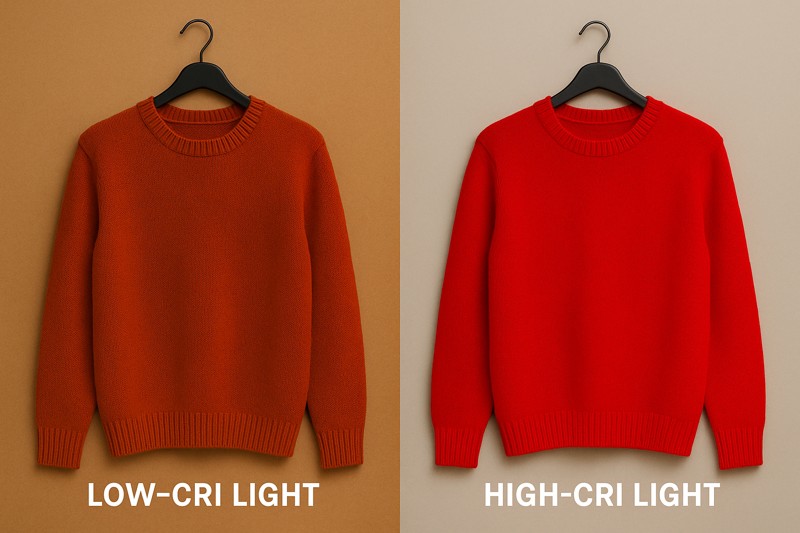
The human brain is wired to respond to color emotionally, and in retail, that emotional connection is everything. Using the wrong light can completely misrepresent a product. Imagine a luxury handbag that looks muted or a fresh apple that appears pale. This is where Color Rendering Index (CRI) and Color Temperature (CCT) become crucial business tools. A high CRI ensures that the colors of your merchandise pop with vivid, accurate tones. Equally important is CCT, which sets the mood. We offer bulbs in a range of temperatures, from a warm 2200K to a neutral 4000K, allowing retailers to create the perfect atmosphere. For example, the popular "amber" glass finish on many of our bulbs produces a warm, inviting light ideal for creating a cozy and upscale environment. Others might use a frosted glass bulb to create a softer, more diffuse light that reduces glare and makes a space feel more comfortable.
Matching Color Temperature to Your Brand
The CCT you choose should align with your brand identity and the products you sell.
| CCT Value | Color Appearance1 | Ideal Retail Environment | Customer Perception2 |
|---|---|---|---|
| 2200K-2700K | Very Warm / Amber | High-end boutiques, jewelry stores, fine dining | Creates a sense of luxury, exclusivity, and comfort. |
| 3000K | Warm White | Casual fashion, home goods stores, cafes | A welcoming and friendly atmosphere that encourages browsing. |
| 4000K | Neutral White | Supermarkets, electronics, hardware stores | A clean and bright feeling that promotes clarity and trust in the product. |
Can You Control a Store's Atmosphere with a Switch?
Is your store's lighting the same from morning to night? A single, static lighting level fails to adapt to changing natural light or the desired mood, making the environment feel monotonous.
Yes, with dimmable LED technology, retailers can dynamically adjust the store's ambiance. Dimming the lights can create a more intimate or exclusive atmosphere, encouraging customers to slow down and spend more time engaging with products.
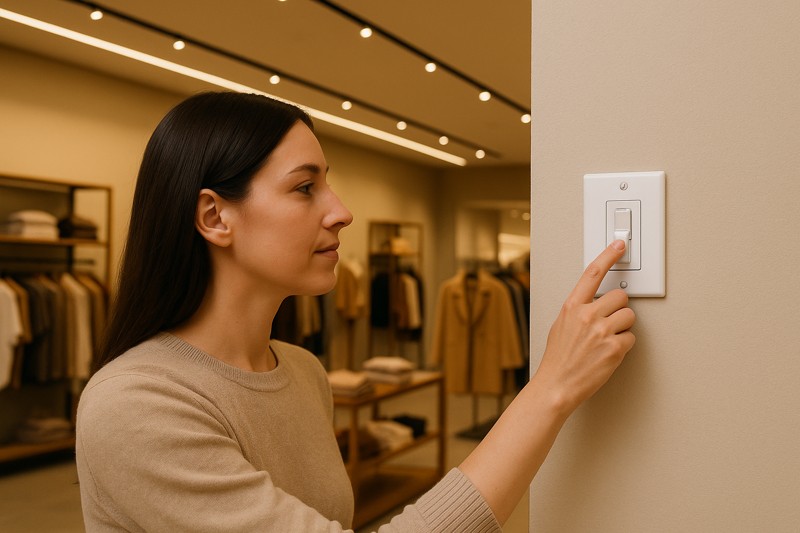
The ability to control brightness is one of the most powerful tools in a retailer's arsenal. A store's energy and mood can, and should, change throughout the day. Bright, energetic lighting might be perfect for a busy Saturday afternoon, but a softer, lower-intensity light can create a more relaxed and luxurious feel during quieter weekday evenings. This is why a vast majority of our decorative LEDs are "dimbaar" (dimmable), designed to work with a dimmable driver that replaces a standard on-off switch. I once advised a restaurant owner to install dimmable amber globe lights over his tables. During the lunch rush, he keeps them bright. But as evening approaches, he dims them to create a warm, intimate setting. He told me customers now stay longer and often order dessert and coffee, significantly increasing his average table value. This level of control allows businesses to curate a customer experience that directly impacts their bottom line.
Benefits of Dynamic Lighting Control
- Mood Setting: Instantly change the feel of your space from bright and active to calm and intimate.
- Energy Savings3: Dimming lights during off-peak hours or when there is ample natural light reduces electricity consumption.
- Increased Dwell Time4: A comfortable and visually appealing environment encourages customers to stay longer, which correlates strongly with higher sales.
- Flexibility: Easily adapt the lighting for special events, promotions, or seasonal displays without needing to change the physical fixtures.
Can Lighting Guide Customers Through Your Store?
Do customers seem to wander aimlessly or miss key product displays? Uniform, flat lighting provides no visual cues, leaving customers unsure of where to look or go next.
Definitely. By using accent lighting and creating contrast, LEDs can establish a visual hierarchy. This guides the customer's eye to high-margin products, new arrivals, or promotional displays, effectively directing foot traffic through the store.
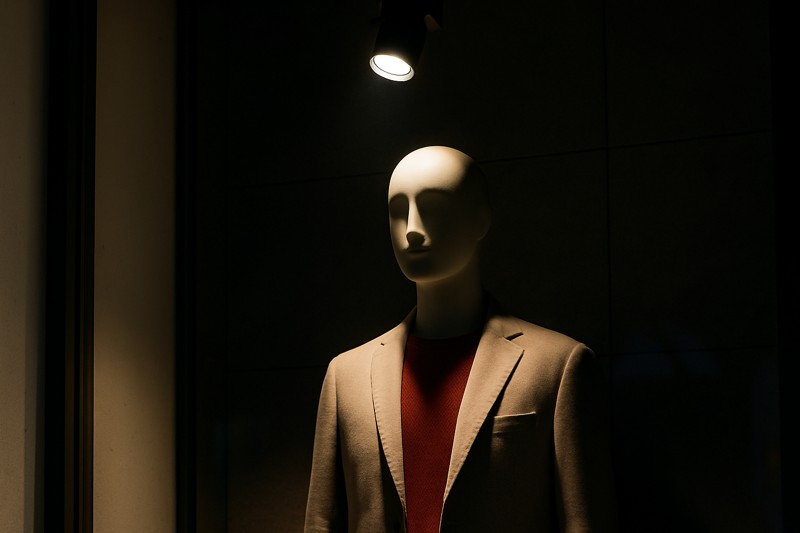
Think of your store as a stage and lighting as your director. You want to guide the audience's attention to the main actors—your most important products. The human eye is naturally drawn to the brightest points in its field of vision. Retailers can leverage this by a technique called "layered lighting." This involves using a combination of ambient (general), task (functional), and accent (focal) lighting. This is where having a variety of bulb shapes and styles is a huge advantage. You could use large, decorative globe bulbs over a central display table to create a "wow" factor. Long, elegant rod-shaped bulbs can be used to add vertical interest to shelving units. We even offer bulbs with unique metallic and rainbow finishes that can become part of the display itself, drawing attention with their distinctive look. By creating these layers of light and points of interest, you create a more engaging journey that leads the customer exactly where you want them to go.
Using Bulb Shapes for Strategic Highlighting
| Bulb Type | Common Shape | Best Use for Retail guidance |
|---|---|---|
| Globe Bulbs5 | Large, round (Ø9.5cm to Ø20cm) | Create a bold focal point over feature tables or in entryways. |
| Rod/Staff Bulbs | Long, tubular (30cm to 46.5cm) | Accentuate vertical displays, shelving, or create linear patterns. |
| Candle/Pear Bulbs6 | Decorative, classic shapes | Add a touch of elegance to smaller displays or intimate settings. |
| Specialty Bulbs | Metallic, Smoke, or Rainbow finishes | Use within displays as eye-catching elements to attract attention. |
Do Your Light Bulbs Reflect Your Brand's Quality?
Are you using cheap, generic light bulbs in your store? The fixtures and the quality of light itself are part of your decor and branding, and poor choices can cheapen your store's image.
Yes, the design of the light bulb itself is a crucial detail. Decorative LED bulbs, with their visible filaments and unique shapes, act as design elements that enhance the brand aesthetic and signal quality to the customer.
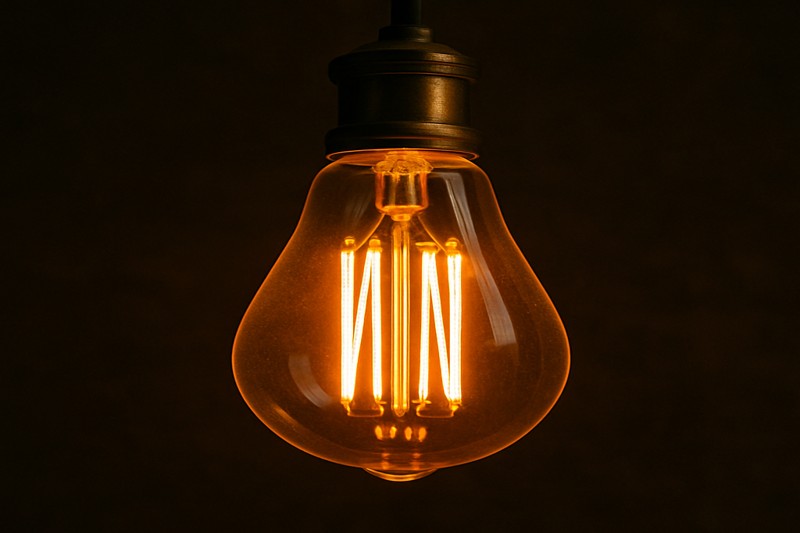
In today's competitive retail landscape, every detail matters. The customer's perception of your brand is formed by a collection of small signals, and lighting fixtures are a big one. An exposed, beautifully crafted LED filament bulb says something very different than a standard plastic bulb hidden in a fixture. It communicates attention to detail, quality, and a commitment to a cohesive aesthetic. This is why we've developed such a wide range of decorative bulbs, from classic Edison styles to modern metallic designs in colors like rainbow, smoke, and copper. A buyer for a chain of trendy cafes once told me he specifically chose our large amber pear-shaped bulbs because they were "instagrammable." Customers would take photos of the decor, tag the cafe, and provide free marketing. The light bulbs weren't just functional; they were a key part of the brand's identity and a tangible symbol of its quality and style.
The Financial Sense of Quality LEDs
Beyond aesthetics, investing in high-quality, commercial-grade LEDs7 is a smart financial decision for any retail business.
- Longevity: Our LED bulbs are built to last, with lifespans of 20,000 hours or more, drastically reducing maintenance and replacement costs.
- Compliance: All our products conform to CE directives, ensuring they are safe and reliable for commercial use.
- Efficiency: LEDs consume far less energy than traditional bulbs, leading to significant savings on electricity bills8 over their long lifespan.
Conclusion
The right LED lighting is a powerful tool for influencing consumer behavior. It elevates your products, creates a memorable brand experience, guides customers through your space, and ultimately drives sales.
Understanding Color Appearance can enhance your brand's visual identity and customer experience. ↩
Exploring Customer Perception can help you tailor your marketing strategies for better engagement. ↩
Explore how dynamic lighting can significantly reduce energy costs and enhance sustainability in your space. ↩
Learn about the correlation between customer comfort and sales, and how lighting plays a crucial role. ↩
Explore how Globe Bulbs can create stunning focal points in retail spaces, enhancing customer experience. ↩
Discover the elegance Candle/Pear Bulbs bring to displays, perfect for creating intimate shopping environments. ↩
Explore this link to understand how commercial-grade LEDs can enhance your business's efficiency and cost savings. ↩
Discover strategies and insights on maximizing energy savings through LED lighting solutions. ↩





